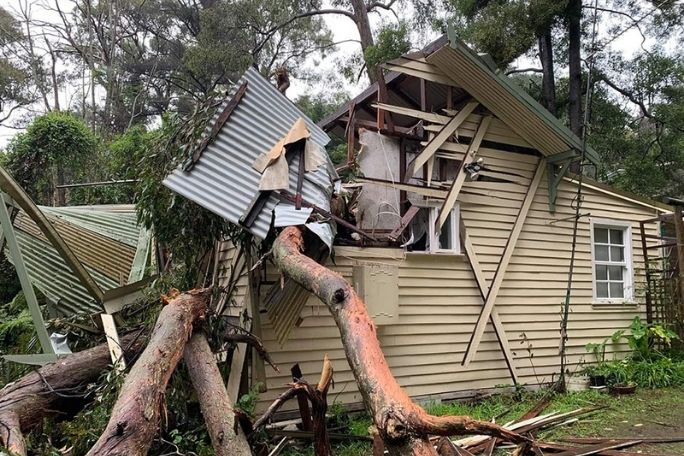Lesson summary
As a class, students will view videos about the impacts of natural hazards, exploring two Australian case studies. They will then participate in a jigsaw activity where each group member will analyse a recollection of the 2018 flood in Hobart. They will choose a natural hazard and research how climate change will affect it in the future. Finally, students will produce a short news broadcast-style video informing the public of the impact of their chosen natural hazard on Australian communities and the effect of climate change on the natural hazard.
The lessons in this unit are designed to inform students about natural hazards in the local environment and ways to reduce risk, prepare, respond and recover from a disaster or emergency.
Content note: This lesson contains images and information about historic disasters in Australia which may be distressing for some students. Consider the history of your local community and students before deciding to use this lesson. Ensure this lesson is completed within the context of the previous lesson in the unit, Introduction To Natural Hazards and followed up by Positive Impacts Of Natural Hazards. Reassure students that natural hazards do not need to become disasters if we learn to prepare, reduce risk, respond to and recover from them appropriately.
Learning intentions:
Students will...
- understand the impacts of disasters on people and communities
- understand the importance of communities working together during disaster recovery
- understand the effect climate change is having on natural hazards.
Success criteria:
Students can...
- analyse recollections of a disaster for impact on people, property and places
- research ways climate change will influence a natural hazard
- create a video message to inform the public about a natural hazard and the effects of climate change on its severity or frequency.
Lesson guides and printables
Curriculum links
Select your curriculum from the options below.
Lesson details
Curriculum mapping
Australian Curriculum content descriptions:
Year 7 Geography:
- Causes, impacts and responses to an atmospheric or hydrological hazard (ACHGK042)
- The way that flows of water connects places as it moves through the environment and the way this affects places (ACHGK038)
- Present findings, arguments and ideas in a range of communication forms selected to suit a particular audience and purpose; using geographical terminology and digital technologies as appropriate (ACHGS053)
Year 8 Geography:
- Different types of landscapes and their distinctive landform features (ACHGK048)
- Causes, impacts and responses to a geomorphological hazard (ACHGK053)
- Present findings, arguments and ideas in a range of communication forms selected to suit a particular audience and purpose; using geographical terminology and digital technologies as appropriate (ACHGS061)
Syllabus outcomes: GE4-1, GE4-2, GE4-3, GE4-4, GE4-5, GE4-8
General capabilities: Literacy, Information and Communication Technology (ICT) Capability
Cross-curriculum priority: Sustainability
Relevant parts of Year 7 achievement standards:
Students describe geographical processes that influence the characteristics of places and how the characteristics of places are perceived and valued differently. They explain interconnections between people and places and environments and describe how these interconnections change places and environments. Students present findings and arguments using relevant geographical terminology and digital technologies in a range of communication forms.
Relevant parts of Year 8 achievement standards:
Students explain geographical processes that influence the characteristics of places and explain how places are perceived and valued differently. They explain interconnections within environments and between people and places and explain how they change places and environments. Students present findings, arguments and ideas using relevant geographical terminology and digital technologies in a range of appropriate communication forms.
This lesson is part of the wider unit of work Disaster Resilience Education – Years 7 & 8
Time required: 80 mins
Level of teacher scaffolding: Medium – facilitate class discussion, lead students in activities
Resources required
- Device capable of presenting videos to the class
- Devices capable of recording video – one per group
- Internet capable devices for student research – at least one per pair
- Student Worksheets – one copy per student
Skills
This lesson is designed to build students’ competencies in the following skills:
- Communication
- Digital literacy
- Empathy
- Social skills
- Collaboration
Additional info
These lessons were designed in consultation with the Australian Institute for Disaster Resilience.


Welcome back!
Don't have an account yet?
Log in with:
Create your free Cool.org account.
Many of our resources are free, with an option to upgrade to Cool+ for premium content.
Already have an account?
Sign up with:
By signing up you accept Cool.org's Terms and Conditions(Opens in new tab) and Privacy Policy(Opens in new tab).